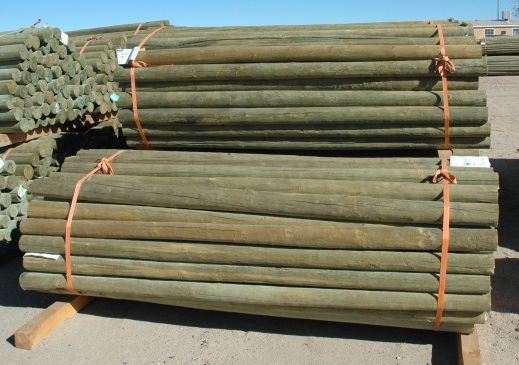Fractionation of Heavy Metals in Liquefied Chromated Copper Arsenate (CCA)-Treated Wood Sludge Using a Modified BCR-Sequential Extraction Procedure
Summary of CCA Sequential Extraction
Chromated copper arsenate (CCA)-treated wood was liquefied with polyethylene glycol/glycerin and sulfuric acid. After liquefaction, most CCA metals (98% As, 92% Cr, and 83% Cu) were removed from liquefied CCA-treated wood by precipitation with calcium hydroxide. The original CCA-treated wood and liquefied CCA-treated wood sludge were fractionated by a modified Community Bureau of Reference (BCR) sequential extraction procedure. The purpose of the BCR-sequential extraction used in this study was to examine the availability of CCA metals in treated wood for reuse. Both As and Cr had a slightly higher concentration in the sludge sample than in original CCA-treated wood. The sequential extraction showed that As and Cr were principally existed in an oxidizable fraction (As, 67%; Cr, 88%) in original CCA-treated wood. Only 1% of both As and Cr were extracted by hot nitric acid with the last extraction step. The distribution of As and Cr changed markedly in liquefied CCA-treated wood sludge. The amount of As in the exchangeable/acid extractable fraction increased from 16% to 85% while the amount of Cr increased from 3% to 54%. Only about 3% of As was present in the oxidizable fraction. However, there was still about 34% of Cr in the same fraction. Based on these results from sequential extraction procedures, it can be concluded that the accessibilities of CCA metals increase markedly by the liquefaction–precipitation process.
CCA Removal Methods
For many years, chromated copper arsenate (CCA) was the most commonly used waterborne wood preservative in the world. Despite the decision of the US and Canadian wood preservation industry to voluntarily withdraw the use of CCA-treated wood from residential and consumer uses as of December 31, 2003 (US EPA, 2003), the use of CCA-treated wood for industrial purposes (e.g., utility poles and marine pilings) continues (Song et al., 2006; Block et al., 2007). In addition, with an expected average service life between 20–40 years, the amount of spent CCA-treated wood in the US and Canada will greatly expand from the current 3–4 million m 3/yr to around 12 million m 3/yr in Canada and the USA within the next 15 years (Cooper, 2003). Many efforts have been made to develop appropriate alternative technologies for disposal of spent CCA-treated wood other than traditional landfills and incineration, which have raised environmental and human health concerns. A method to remove Cr, Cu, and As from spent CCA-treated wood based on wood liquefaction has been developed by Lin and Hse (2005). They reported that CCA-treated wood can be liquefied under similar liquefaction conditions as non-treated wood and up to 99% of the heavy metals can be removed from CCA-treated wood by adding ferrous salts during the liquefaction stage. In addition, CCA-wood complexes are either released from the decomposed lignin and cellulose or remains as the complexes or chelates with decomposed lignin and cellulose during the liquefaction reaction, which should provide better accessibility for the extractants in the heavy metal removal step.
Although many CCA metal removal methods, such as chemical extraction (Kartal and Clausen, 2001a; Kakitani et al., 2006) and bioremediation (Clausen, 2004b), have been proposed, very few studies have focused on both removal and reuse of CCA metals. It has been generally considered that Cr(VI) is reduced to Cr(III) and which then precipitates with As(V) and Cu(II) in wood components during CCA fixation process. Therefore, it is essential that the recovered CCA metals should be in an appropriate oxidation state which can be reused as a treating solution.
To read more please visit our publication: Fractionation of heavy metals in liquefied chromated copper arsenate (CCA)-treated wood sludge using a modified BCR-sequential extraction procedure.
Meet the Author
Dr. Todd Shupe is the President of Wood Science Consulting, LLC. He is a well-recognized expert on wood forensics, wood preservation, wood decay and degradation, and wood species identification. He has a broad background in new product development, quality management, and marketing and sales in both the public and private sectors. For more information please visit DrToddShupe.com.
We welcome your comments below.
Thank you for visiting. We trust that you have enjoyed reading our articles.
Liked this post? Read more below or search for more topics . . .


